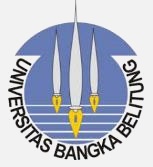TASK BASED LANGUAGE TEACHING TO IMPROVE STUDENTS’ WILLINGNESS TO COMMUNICATE IN ENGLISH CLASS
DOI:
https://doi.org/10.33019/berumpun.v2i2.20Keywords:
Task Based Language Teaching, Wilingness to CommunicateAbstract
The changing of English language teaching method from Audio-lingual Method to Communicative Language Teaching (CLT) has given great impact to the pedagogy of teaching English as a Foreign Language (EFL) and/ or English as a Second Language (ESL). Task Based Language Teaching (TBLT) method which emphasizes more on the meaning of a language and targeted tasks, then, dominates the English teaching world as a response to the un-satisfaction towards the previous methods (Long, 2015). This current study aims at seeing to what extent the task variety influences students’ willingness to communicate based on three contexts which include trait-like, situation, and linguistic. Three communicative tasks which emphasizes both on focused meaning and focused form were given. The communicative tasks include game, problem solving, and jigsaw. Observation was done during class interaction and continued with in depth interview. The result shows that emotion, class situation, and cognitive simultaneously influence the students’ willingness to communicate in English class. Those factors are inseparable, interact and influence interchangeably on the students’ willingness to communicate in English class as elucidated in complex dynamic theory.
Downloads
References
Boo, Z., Dörnyei. Z., & Ryan, S. (2015). L2 Motivation Research 2005–2014: Understanding A Publication Surge and A Changing Landscape. System, 55, 147-157.
Branje, S., J., T. van Lieshout, C.,F.,M.& Gerris. J.,R.,M. (2007). Big Five Personality Development in Adolelescence and Adulthood. European Journal of Personality, 21(1), 45-62.
Cao, Y. (2014). A Sociocognitive Perspective on Second Language Classroom Willingness to Communicate. TESOL Quarterly, 48, 789–814.
Cao, Y., Philp, J., (2006). Interactional Context and Willingness to Communicate: A Comparison of Behavior in Whole Class, Group and Dyadic Interaction. System, 34, 480-493.
Clement, R., Baker, S., MacIntyre, P., 2003. Willingness to Communicate in A Second Language: The Effects of Context, Norm, and Vitality. Journal of Language and Social Psychology 22 (2), 190-209.
Dewale, J-M. (2007). Predicting Language Learners’s Grade in the L1, L2, L3, and L4. The Effect of Some Psychological and Sociocognitive Variables. International Journal of Multilingualism, 4(3), 169-197.
Dornyei, Z. (2005). The Psychology of the Language Learner: Individual Differences in Second Language Acquisition. Mahwah, NJ: Lawrence Erlbaum.
Ellis,R.(2009).Task Based Language Teaching: Sorting out he Misunderstandings. International Journal of Applied Linguistics, 19(3), 221–246.
Fadilah, E. (2016). Oral Corrective Feedback on Students’ Grammatical Accuracy and Willingness to Communicate in EFL Classroom: The Effects of Focused and Unfocused Prompts. The Asian EFL Journal (Language Teaching Issue), 2, 57-85.
__________. (2017). Rethinking the Maintenance of CLT in Indonesia: A Response to: Ariatna’s (Vol. 7, No. 2, 2016) “The Need for Maintaining CLT in Indonesia”. TESOL Journal, (electronic version).
Kang, S. (2005). Dynamic Emergence of Situational Willingness to Communicate in A Second Language. System, 33, 227–292.
Khajavy, G. H., Ghonsooly, B., Hosseini Fatemi, A., & Choi, C. W. (2016). Willingness to Communicate in English: A Microsystem Model in the Iranian EFL Classroom Context. TESOL Quarterly, 50, 154–180.
Krashen, S. (1981). Principles and practice in Second Language Acquisition. Oxford: Pergamon.
Larsen, R.,J. &Buss, D.,M, (2003). Personality Psychology: Domain of Knowledge about Human Nature (4th revisied edition). New York:McGraw-Hill Higher Education.
Liu, M., & Jackson, J. (2008). An Exploration of Chinese EFL Learners’ Unwillingness to Communicate and Foreign Language Anxiety. Modern Language Journal, 92(1), 71–86.
Long, M., H. (2015). Second Language Acquisition and Task Based Language Teaching. Malden, MA: Wiley-Blackwell.
____________. (2016). In Defense of Tasks and TBLT: Nonissues and Real Issues. Annual Review of Applied Linguistic, 36, 5-33.
MacIntyre, P., Dornyei, Z., Clement, R., Noels, K., (1998). Conceptionalizing Willingness to Communicate in A L2: A Situational Model of L2 Confidence and Affiliation. Modern Language Journal 82 (3), 545-562.
MacIntyre, P.D., Burns, C., Jessome, A. (2011). Ambivalance about Communicating in ASecond Language: AQualitative Study of French Immersion Students’ Willingness to Communicate. The Modern Language Journal, 95 (1), 81-96.
MacIntyre, P. D. & Doucette, J. (2010). Willingness to Communicate and Action Control. System, 38, 161-171.
Mystkowska-Wiertelak & Pawlak. (2015). Investigating the Dynamic Nature of L2 Willingness to Communicate. System, 50, 1-9.
Ozonska-Ponikwia, K. & Dewale, J-M. (2012). Personality and L2 Use: The Advantage of Being Open-Minded and Self-Confident in An Immigration Context. EUROSLA Yearbook, 12(1), 112-134.
Peng, J., & Woodrow, L. (2010). Willingness to Communicate in English: A model in the Chinese EFL Classroom Context. Language Learning, 60, 834–876.
Peng J-E (2014) Willingness to Communicate in the Chinese EFL University Classroom: An Ecological Perspective. Bristol: Multilingual Matters.
Pierchurska-Kuciel, E. (2018). Opennes to Experience as A Predictor of L2 WTC. System, 72, 190-200.
Swan, M. (2005). Legislation by Hypothesis: The Case of Task-Based Instruction. Applied Linguistics, 26(3), 376–401.
Weaver, C. (2005). Using the Rasch Model to Develop A Measure of Second Language Learners’ Willingness to Communicate within A Language Classroom. Journal of Applied Measurement, 6, 396–415.
Yashima, T., (2002). Willingness to Communicate in A Second Language: the Japanese EFL Context. Modern Language Journal 86, 54-66.
Yashima, T. MacIntyre, P.D. & Ikeda, M. (2016) Situated Willingness to Communicate in An L2: Interplay of Individual Characteristics and Context. Language Teaching Research, 1-23.
Zarrinabadi, Z. (2014). Communicating in A Second Language: Investigating the Effect of Teacher on Learners’ Willingness to Communicate. System 42: 288–95.
Zarrinabadi, N., & Tanbakooei, N., (2016). Willingness to Communicate: Rise, Development, and Some Future Directions. Language and Linguistic Compass,10 (1), 30-45.
Zarrinabadi, N., Ketabi S.,& Tavakoli, M.(2017). Using A Person-Centered Future Time Perspective Intervention to Enhance EFL Learners’ Willingness to Communicate. RELC, 1-9




